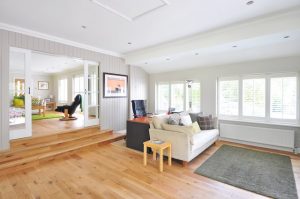Interior design is relatively new and it is an artwork form that evolves constantly. If it were not for the foundation and principles of the artistic world, the world of interior design could be a really different one. The elements that make a piece of art strong can, and often do, make an interior design scheme equally impressive. It’s not only professional interior designers who will apply the essentials of conventional artwork to their house designs, by implementing the best creative methods to their own ‘blank canvas’, qualified designers and ambitious homeowners alike can create a visual masterpiece in any room.
Colour plays a huge role in layout and, just like art, forms the base of any interior scheme. The colors chosen by artists are selected for the emotional reaction they create where a strategically chosen palette can be utilised in precisely the exact same way throughout the home. Consider the calming and serene functions of Monet. Both the blues and greens used in a number of his works make ideal shades for spaces where rest and relaxation are the nature of the day, while the lively compositions of Leonid Afremov rely on reds, yellows and purples to create a sense of energy.
In the world of art, ‘form’ can mean any number of different things but the very best way to look at it from an interior design perspective is the fashion in which all visual components are brought together for optimum effect. Combining them in a manner that produces the holistic vibe and aesthetic you’re searching for needs to be your principal aim when creating a cohesive rather than a chaotic look.
If you look at some of the most admired pieces of art, much of their success comes down to perspective. Attaining a satisfying sense of space between objects, including repetition and tone, in addition to a feeling of consistency generated by recurring patterns and colors.
Perspective is hugely important in interior design best practices and the same principles used by artists may be used at home by you. Identify distinguishing elements of your favourite piece of furniture and replicate them elsewhere in the area. For instance, the curves of a retro coffee table can be echoed elsewhere in your design through a similar use of shape evident in different aspects of the layout. Consider the scale and ratio of the room, using size can draw attention to a focal point while using just one or two oversize pieces of furniture or accessories (a large floor lamp or a chunky seat) will create a welcome sense of drama into the room.
 The way in which many pieces of artwork are balanced can also be utilised in interior design schemes. Produce balance by means of a symmetrical layout utilizing furniture or decorative accessories, such as a centrally positioned side table with matching lamps and chairs on either side. Alternatively, you may produce an edgier interior scheme by using an asymmetrical setup, balancing a huge corner sofa on one side of the room with smaller, daintier chairs on the other. You could also utilize the artists’ technique of ‘radial balance‘, taking a fundamental element and having other components stem from the piece in a circular pattern. Using a statement coffee table is just one instance of a point around which other things can orbit.
The way in which many pieces of artwork are balanced can also be utilised in interior design schemes. Produce balance by means of a symmetrical layout utilizing furniture or decorative accessories, such as a centrally positioned side table with matching lamps and chairs on either side. Alternatively, you may produce an edgier interior scheme by using an asymmetrical setup, balancing a huge corner sofa on one side of the room with smaller, daintier chairs on the other. You could also utilize the artists’ technique of ‘radial balance‘, taking a fundamental element and having other components stem from the piece in a circular pattern. Using a statement coffee table is just one instance of a point around which other things can orbit.
To be able to achieve real cohesion and unity within a place, explore how artists bring all elements within a painting, sculpture or photograph together for a sense of aesthetic consistency. This does not mean all your furniture and decorations should match, but it’s important that there is a solid theme which ties it all together. A color, shape or fashion that all major components have in common is an ideal starting point.



